This English Backsword is fitted with a blade of sharpened 1055 high carbon steel. The steel hilt has been treated with a darkened, antiqued finish. The grip is faux rayskin inlaid with twisted steel wire. The scabbard is of leather and finished with an antiqued steel chape and locket.
What a brave weapon is short sharp light sword, to carry, to draw, to be nimble withal, to strike, to cut, to thrust both strong and quick. – George Silver, from his Paradoxes of Defense – 1599
The Elizabethan George Silver was a major proponent of the English backsword in lieu of the rapier. Though he was quite familiar and able with the rapier, he preferred the cut-and-thrust versatility of the backsword over the thrust-oriented rapier and he extolled it as a weapon suitable for street self-defense and the battlefield over the rapier which was optimized for the duel, but unsuitable for the battlefield. He even called it a dangerous weapon because it could not offer enough protection to its user.
Silver believed that the swordsman should be paired with a weapon and a fighting system suitable for all situations, instead of focusing ones efforts into gentlemanly duels at the expense of other, more practical martial applications.
Silver extolled the virtues of native English swordsmanship over the fashionable swordsmanship of the rapier duellists from Italy who taught duelling in England at the time. He prove their methods impractical and inferior he once challenged Italian fencing master Vincentio Saviolo to a duel with a variety of weapons in a public event. Though Silver and his students drummed up much publicity for the event, Saviolo himself did not appear.
Cold Steels English Backsword has a well-tapered blade well-suited for both cutting and thrusting. It can hack decisively whilst maintaining a notable degree of practical agility. The mortuary-style hilt provides excellent protection for the hand and the tempered blade is thick and flexible enough to capably parry even the harder-hitting swords of the Elizabethan battlefield whilst keeping the thrusting agility needed to ensure it is a capable dueling and self-defense blade.


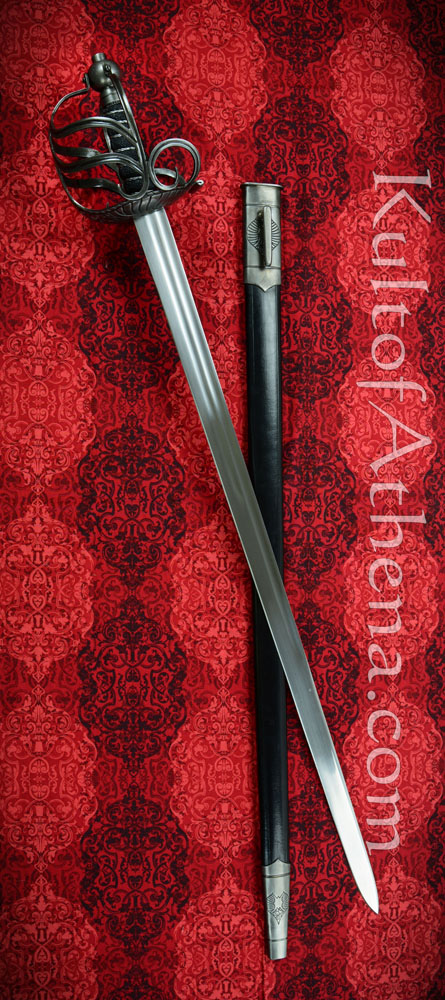
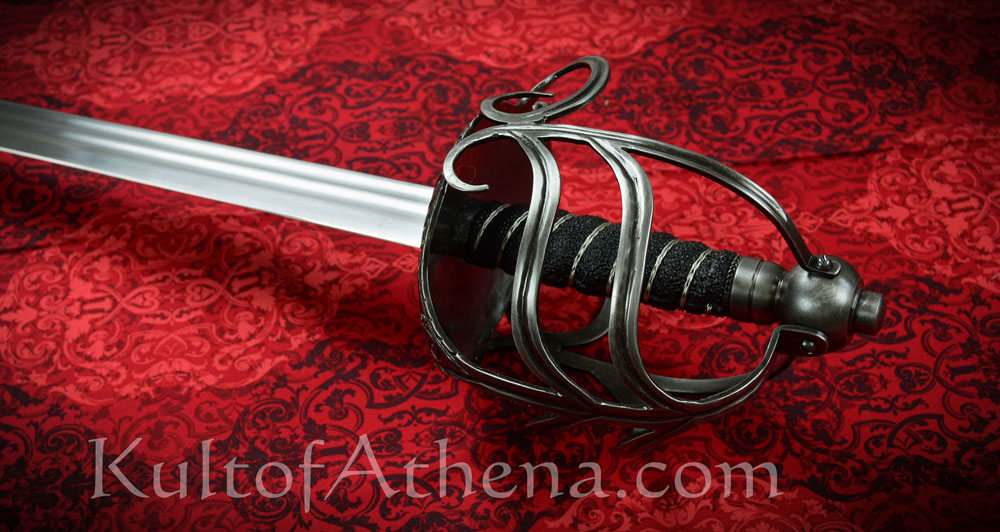

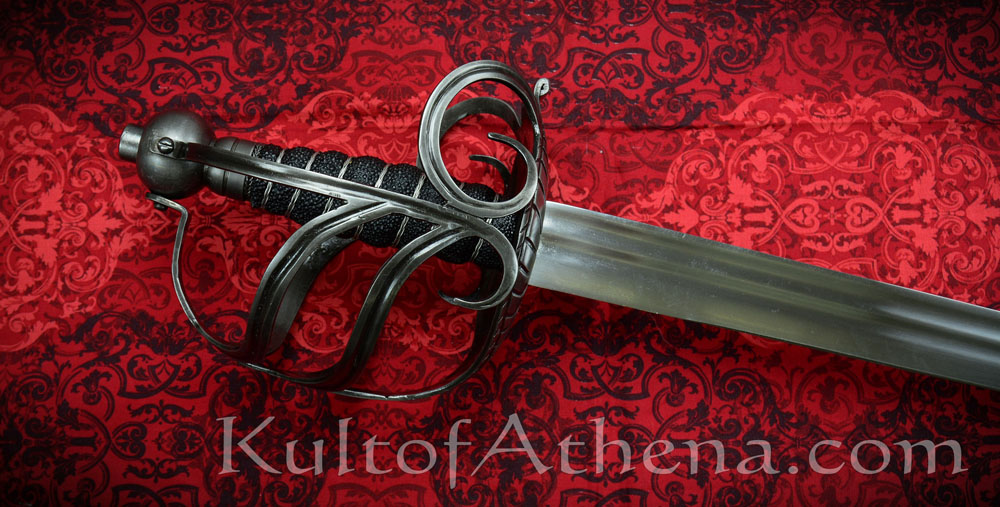
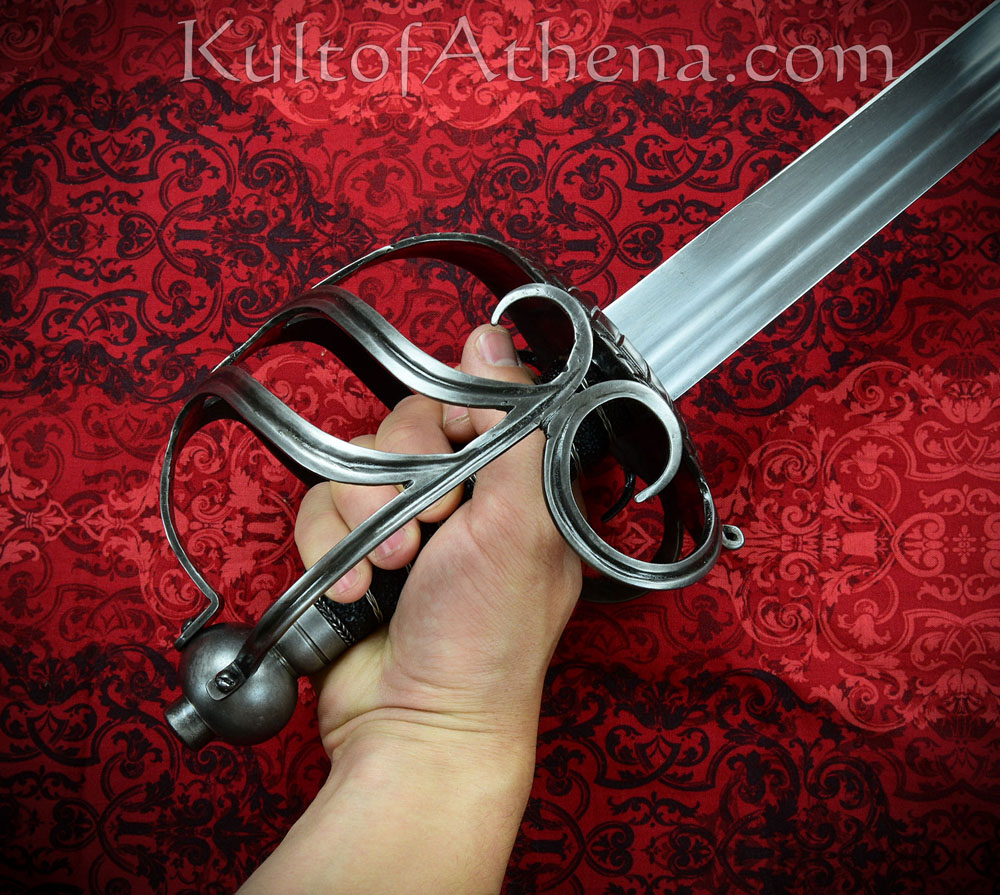
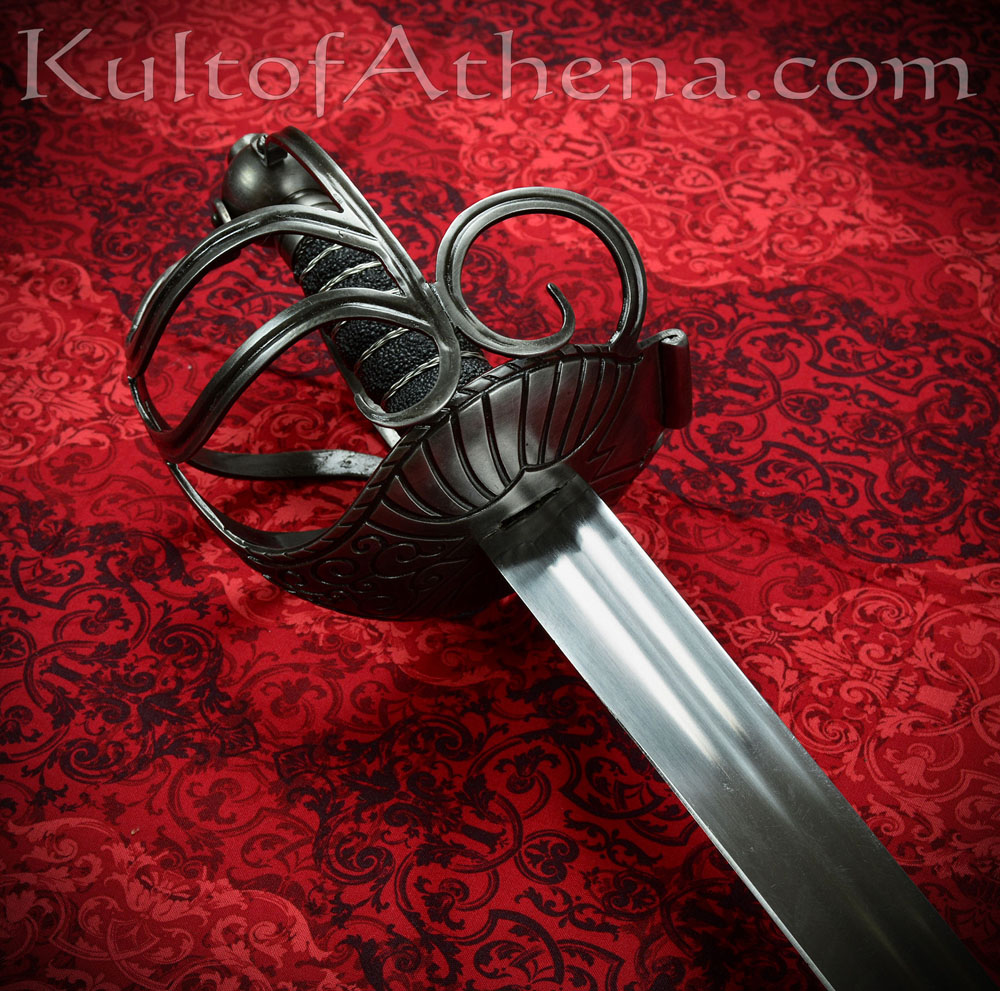
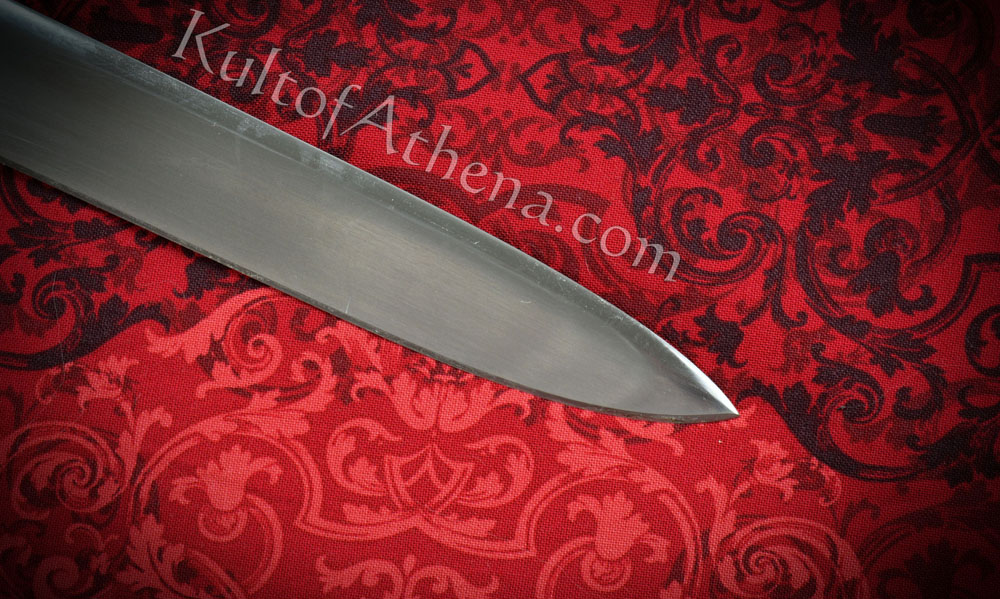
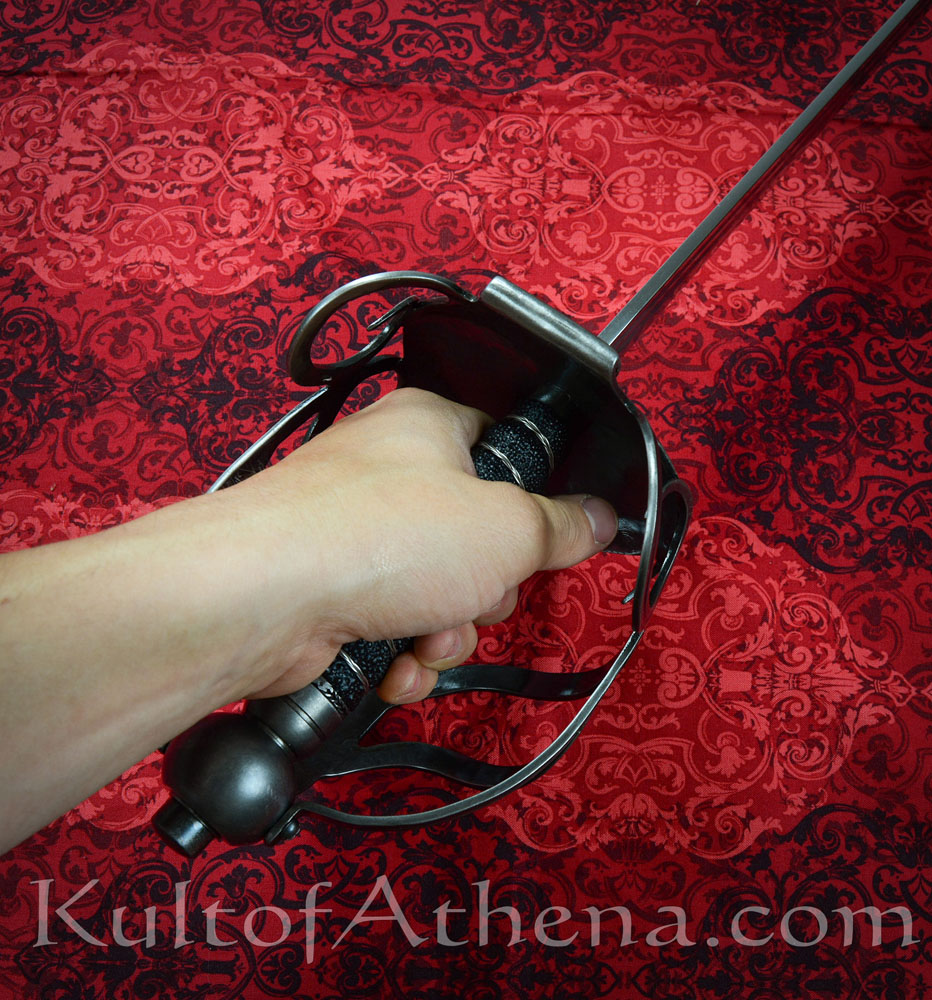

Henry B. –
COLD STEEL ENGLISH BACKSWORD I received this sword a day ago with the intent of using it for 18th century reenactments. There were a lot of older swords utilized by both the American militia and Continentals. Positives: It is a usable sword. The weight is a bit heavy in comparison to an original 17th Century English back sword, but in the ball park. The point of balance is approximately 41/2 inches from the hilt and the point of percussion is about 51/2 inches back from the point. Hilt components are well done and stayed tight during testing. The faux ray skin grip is effective. I especially like the modest decoration on the roomy basket hilt. The scabbard is made of heavy leather, has decorations on the throat and drag, and features long unobtrusive plastic liners that hold the blade firmly but without binding. Negatives: The entire hilt is canted about 5/16ths of an inch to the right and finished with what looks like a very poor cold bluing job, (in fact, I used cold gun blue on it and it matched up perfectly.) I suspect there is a lot of epoxy involved here so any correction is not feasible. The blade is slightly “whippy” in my opinion and not especially sharp. The decorations on the scabbard throat will never be seen if the sword is actually carried while, oddly, the frog stud is plain.
Brief testing was done with a few Perrier water bottles, (tough thick plastic with a green sheet of plastic on top of that,) and some 2+ inch thick bamboo cut 5 weeks ago. The factory edge just didn’t cut the Perrier water bottles at all and tended to splinter the bamboo. A more acute bevel was put on the edge and suddenly the green Perrier bottles parted like the Red Sea. The bamboo would take a cut about 2/3rds of the way through and split, which is actually pretty normal even with a sharp machete.
My conclusions? The blade took a very slight set during the bamboo cutting that easily was put right, no more than a couple of degrees off true. If you get this sword be prepared to rework the edge of the blade for it to cut much. You may also want to sharpen the false edge. That definitely help with the balance. If the hilt is canted you’ll just have to live with it. As for authenticity, while there is no peened tang the retaining nut does a good stand in for a pommel button so I doubt most folks will notice. For authenticity’s sake I cut down the counter guard for a later 17th Century look, (and reduce weight,) and added staples to the throat and drag. Other than that the sword was good to go.
Is this Cold Steel product “the sharpest and strongest” sword out there? Well, sort of, but with a couple of hours work it can be a solid performer. It is definitely worth the price.
Aaron J. –
A bit on the flimsy side. While I think this is a nice sword that cuts well, is suffers from an overly thin and whippy blade. The tang is rather narrow as well, so I’d be afraid to hit hard targets with it. The stock grip is plastic and is cavernous on the inside so if it comes loose it will shift a lot. I would replace the grip with a tight fitting one or fill the standard one with epoxy. Other than that it handles well and feels insanely light.
Paul B. –
Clumsy, but I still like it The English Backsword by Coldsteel is a sword that I really wanted to like and to be fair I do like to see it hanging on the wall with the blade on show. Unfortunately it shares a few faults with other swords of theirs that I have purchased.
The overall design is pleasing to eye from a distance, but doesn’t hold up to closer examination. The guard is clearly made to appear ‘workmanlike’ but ends up just looking kind of cheap. It feels sturdy though and holds up well to a few punches to a boxing bag without bending.
Like a couple of other Coldsteel products I’ve owned the grip is very rough. Gloves are needed for any serious practice sessions. It is firm and of course grippy.
The blade looks good with 2 fuller grooves.
Like every CS sword I’ve handled though, the balance feels all wrong. The blade is somehow feels too whippy and too heavy at the same time. Most CS swords I believe are made to be durable cutters as opposed to fighting blades, but the English Backsword seems to be pretty poor at both. That may be that I’m not versed in George Silver’s style of fighting, I personally found it clumsy to wield.
It still looks good on the wall though and as there aren’t many cheap swords available in this style it may still be worth a buy.
Ron G. –
They fixed it. I have 3 of these blades, all bought from here. I’ve been fighting with one (after dulling it for safety, of course) for a couple years now and have had no issues with it at all. I wanted one of these really bad when they first came out but had read all the terrible reviews, so I waited. Cold Steel never officially made a statement about fixing them, but they did disappear from online markets for about 6 months. It was after that when I got my first one, and when I saw that it didn’t have any of the issues listed in earlier reviews, I wanted to make sure that I hadn’t just “got lucky” and got a god one. So I bought a couple more just to make sure before writing this review. The only reasons I didn’t rate it 5 stars are that it still could have a bit better fit and finish, and one of the scabbards has the belt clip on the wrong side so that the seam shows when worn.
Charles Gaskins –
One of the best functional backswords on the market. Weight is almost identical to original examples. The blade is nimble yet sturdy. An absolutely amazing sword for the money. This example from coldsteel I would gladly take into the Elizabethan battle field. I prefer this type of sword over a rapier ANY DAY. Cold steel did an amazing job with this sword. I HIGHLY recommend.
Bob Ialongo –
Huge thanks! 💙